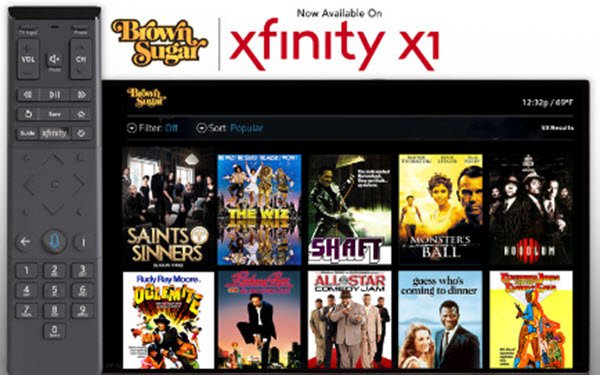
While we, as an industry, spend a lot of time talking about the shift to streaming and seem to have written pay TV off for dead, the truth is that there are still far more people who have pay TV subscriptions than those that don’t.
Meaning ignore pay TV at your own risk.

One area I’ve long thought was overlooked was MVPD VOD, that section of your pay TV interface that looks and feels exactly like a streaming service. For a long time those interfaces were all but inaccessible and so poorly designed they were near impossible to navigate. (IIRC, I once did a piece describing how it took me 37 clicks to get back to where I’d started when I accidentally clicked on the wrong episode of a series I was watching via Verizon’s VOD service.)
That said, the MVPDs (mostly) seem to have remedied that. Comcast’s X1 system, for example, is very well designed and very easy to use.
And so viewers have rediscovered the systems which have massive libraries of both TV shows and movies and seem to combine the best of the FASTs and the Flixes, mixing older shows with more current ones.
Viewership has risen during the pandemic as well. A May 2020 study from The Diffusion Group showed that 77% of MVPD and vMVPD subscribers reported regular use of their service’s VOD offering, and that during the early months of the pandemic, 18.5% reported a “significant” increase in their MVPD VOD usage, while 41.7% reported “some increase” which indicates a significant leap across the board.
Advertising on MVPD VOD has been an interesting ride too.
NEXT TV NEWSLETTER
The smarter way to stay on top of the streaming and OTT industry. Sign up below.
Initially, many of the systems were seen as marketing tools, and so the shows were ad free, something a number of people (raises hand) had discovered back in the day as we discovered the joy (and speed) of watching without interruptions.
As viewership picked up, however, the MVPDs introduced advertising to VOD, most of it un-skippable. This was a huge step--viewers had never been able to not skip ads before--and it was controversial, with many viewers threatening to go back to recording shows on their DVRs where ads were, for the time being, easily skipped. (My Verizon remote even had a button that let you skip ahead in 30 second intervals.)
Those un-skippable ads had another advantage for advertisers: they could be targeted to specific viewers based on demographics.
That was the initial impetus behind Canoe, a joint venture between Comcast, Charter and Cox, that was charged with selling the early addressable inventory on MVPD VOD. Canoe really was a pioneer in the addressable TV space at a time when very few advertisers or agencies understood what it was or why they should use it. So kudos to them for blazing a trail for the rest of us.
A One-Two Punch From Canoe
Their work in softening up the ground for today’s wave of addressable is why it’s great to see two pieces of good news for Canoe this week.
The first is that Canoe will be working with both AMC Networks and the On Addressability Initiative to serve up addressable ads to both linear and VOD households across the Comcast and Charter Spectrum ecosystems, a total of around 30 million-plus homes.
The secret sauce here is that agencies will be able to make their buy with a single insertion order. While that doesn’t sound all that significant, the complexity of making addressable buys, where different MVPDs maintain different systems and VOD and linear are often sold separately is often cited as one of the major reasons that advertisers have not committed more money to addressable buys. And while the AMC project is just a test with one client right now, if it is successful--and there’s no reason to think it won’t be--it will help to increase the acceptance of addressable on MVPD systems as other advertisers follow suit.
In a similar vein, an announcement that Beachfront, a leading ad tech company, would be selling Canoe’s Comcast, Charter and Cox inventory on a real time programmatic basis (with an assist from MadHive, which handles the buy side of the equation) will also go a long way towards boosting MVPD VOD addressable and making it easier for brands to buy across providers. It also makes it competitive with OTT inventory, which has traditionally been sold programmatically and thus enjoyed the price advantages that come with that.
Most significantly, the deals help place the two pools of inventory on an equal footing in the minds of ad buyers, which helps make addressable an easier sell to marketers.
News that Nielsen is expanding its measurement database to include both set top box data and ACR data as a way to better measure addressable is a final boost for addressable this week. Getting some form of standardized measurement with which to judge the number of people who have seen their addressable ads has long been on advertisers’ wish lists and Nielsen’s new system will finally allow for measurement in instances where multiple advertisers are sharing the same ad slot, targeting ads at different segments of the audience.
While TV is most definitely changing and the shift to streaming is well underway, change in the television industry comes slowly, as witnessed by the fact that the first part of this sentence has been true at some level for the past ten years.
That said, MVPD VOD still has an audience that allows advertisers to reach tens of millions of viewers, along with the ability to easily handle and measure addressable inventory, including programmatic. As such, advertisers should see these two new deals as a reason to pay closer attention to the opportunities it presents.
Alan Wolk is the co-founder and lead analyst for media consultancy TV[R]EV

